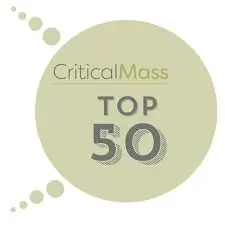Each year,
Photolucida’s Critical Mass stands out as one of the most respected and insightful photography competitions in the world. The process is as rigorous as it is inspiring: photographers submit a cohesive portfolio of around ten images accompanied by an artist statement, which are first reviewed and narrowed down to 200 finalists before being evaluated by an international jury of industry professionals.
The 2025 edition has just announced its
Top 50 finalists. This year marks my first time serving as a juror, and t’s been an extraordinary privilege to witness the breadth and depth of contemporary photographic practice from around the globe.
What stood out most to me this year was the diversity of approaches—a dynamic balance between conceptually layered, mixed-media works and projects grounded in personal or social realities. Many artists ventured beyond the traditional image, incorporating collage, painting, or installation elements to expand photography’s expressive potential. At the same time, others turned their lenses toward intimate, real-world narratives that reflect on human connection, identity, and transformation.
Together, these portfolios reveal an ongoing dialogue between experimentation and observation, where aesthetic innovation and lived experience coexist. The result is a captivating reflection of photography’s evolving role—simultaneously introspective and outward-looking, poetic and investigative.
As always, Critical Mass reminds us why photography remains such a vital medium for storytelling—its ability to translate personal experience into something universal, to question, to witness, and to connect us to one another through shared vision.
Lewis Ableidinger: 2025 Michael Reichmann Anniversary Prize

Farland © Lewis Ableidinger
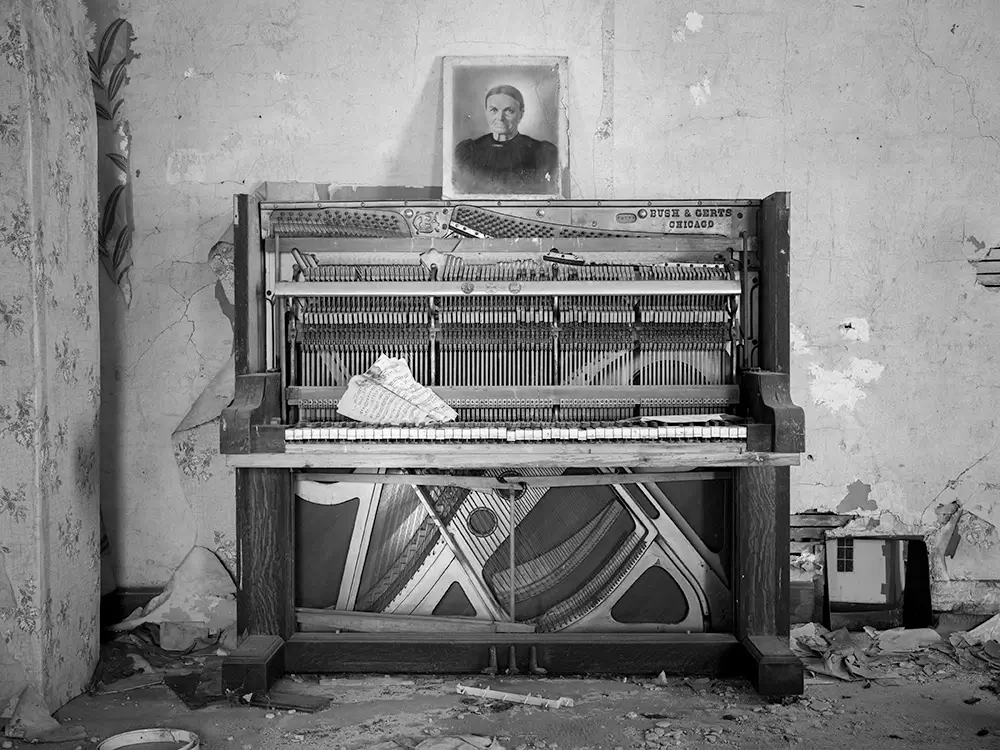
Farland © Lewis Ableidinger
grew up in Kensal, a small town in east-central North Dakota, where he developed a deep appreciation for the understated beauty of his surroundings. He began photographing old grain elevators in 1998, which sparked a fascination with exploring and documenting every corner of his home state. A graduate of Minnesota State University Moorhead with degrees in Graphic Communications and Jazz Performance (2007), Lewis works as a locomotive engineer while continuing to pursue his passion for photography. He currently lives in Harvey, North Dakota.
Gabrielle Barnett: 2025 Rising Star Award
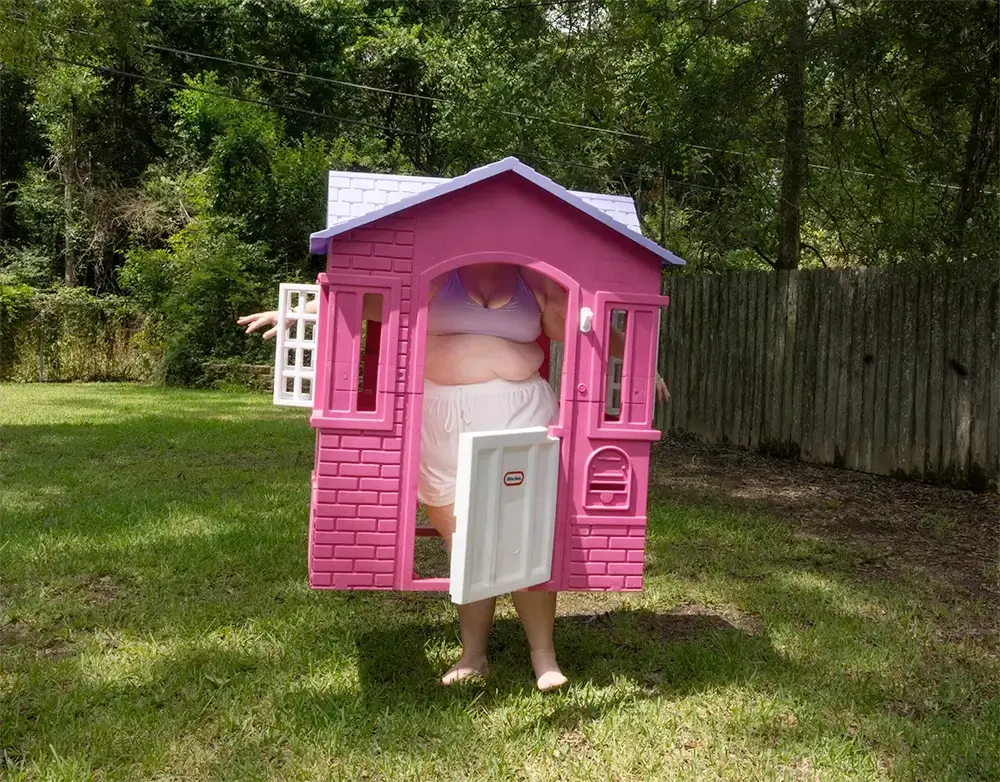
Desire Body © Gabrielle Barnett
is a Southern lens-based artist, writer, and Adjunct Professor at the University of Georgia. Her interdisciplinary practice spans photography, video, printmaking, and sculpture to examine cultural narratives surrounding fatness, motherhood, and desirability. Through tactile materials and conceptual strategies, Barnett explores the politics of visibility and the conditions under which certain bodies are asked to diminish or disappear. Her ongoing series Desire Body asserts fat visibility as a site of intimacy and power, while her current research on the fat athlete challenges normative ideas of strength and capability.
Other Winning Portfolios
Seunggu KIM
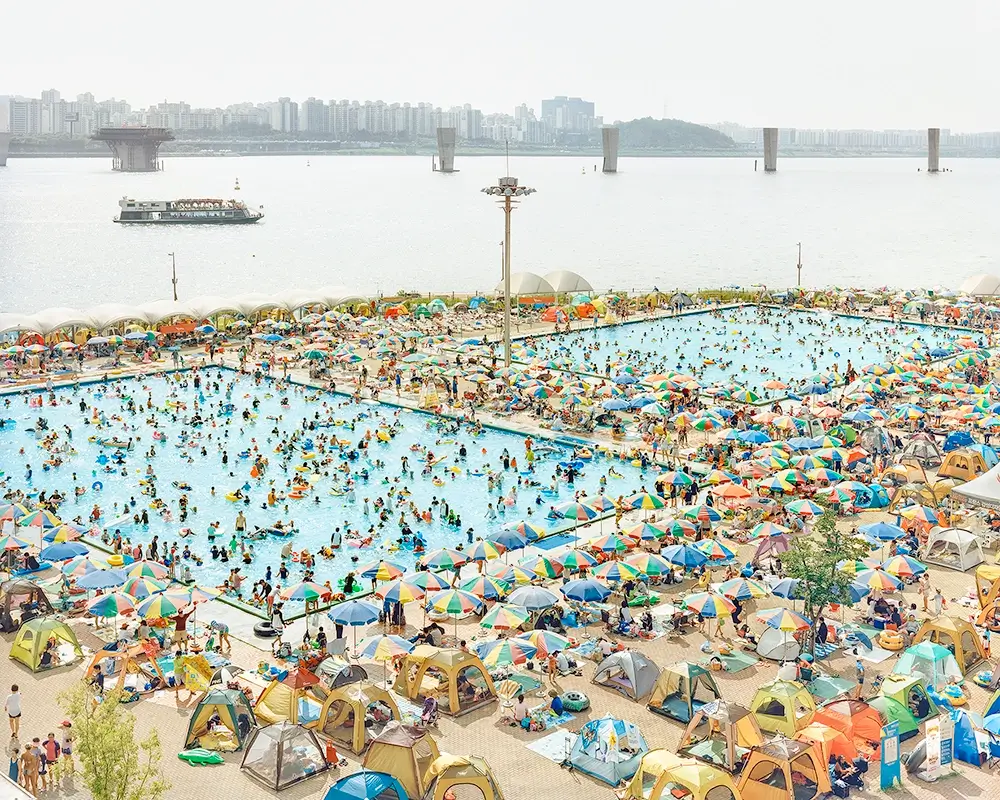
Swimming Pool from the series 'Better Days' © Seunggu KIM
Over the past 40 years, Korea has undergone rapid development, which has led to
various social consequences. One of the most notable is the culture of long working
hours and extremely short breaks. During holidays, Koreans do their best to enjoy
their time off, but due to limited time, they often stay close to the city.
I take a step back to observe leisure spaces and the people within them—framing
scenes slowly and waiting for moments where complex elements come into balance.
This series reflects aspects of Korea’s “fast-paced lifestyle” and “community-based
trust”. It reveals how people adapt to their circumstances, find joy together, and strive
for coexistence.
www.seunggukim.com
Elliot Ross

Tim and the First Rain from the series 'A Question of Balance' © Elliot Ross
In the Navajo Nation–the largest Native reservation in the United States–water is not taken for granted. Here, more than one in three Diné must haul water to their rural homes, often across long distances. The Diné, who are 67 times more likely to lack running water than the average American, use the least amount of water per person in the U.S., but pay the most. Eighty miles away, residents of Utah’s Washington County rely on the same water supply yet pay less for that water than almost anyone in the country, and until recently, consumed the most. This contrast reflects inequities of power and access across rural and racial lines through our most fundamental resource.
As the American Southwest endures its driest period in 1,200 years, lawmakers have an opportunity to make significant changes to how water is allocated and address gaps in equity. For the first time in over a century, the U.S. federal government is drafting a new plan—one that anticipates a drier future and sets the world’s most litigated river system on a sustainable path. It also promises to center Native perspectives and remedy a water supply divided along racial lines. Indigenous communities, whose relationship with the government has been largely defined by broken promises, remain deeply skeptical.
This project is close to home–living between the two communities in my daily life, I too rely on the same water–which I enjoy safely, cheaply and reliably. As an artist and journalist, I feel compelled to expose the inequities my Indigenous neighbors face. For two years I built relationships within the communities. Through a fellowship at the University of Colorado, I studied the underlying contextual forces that have wrought this gross inequity. In the second year, I slowly began making work using a 6x7 camera, supported by the Center for Contemporary Documentation. I believe in the power of conversation to span political divides, and through awareness, move the needle in this critical moment.
elliotstudio.com
Aline Smithson
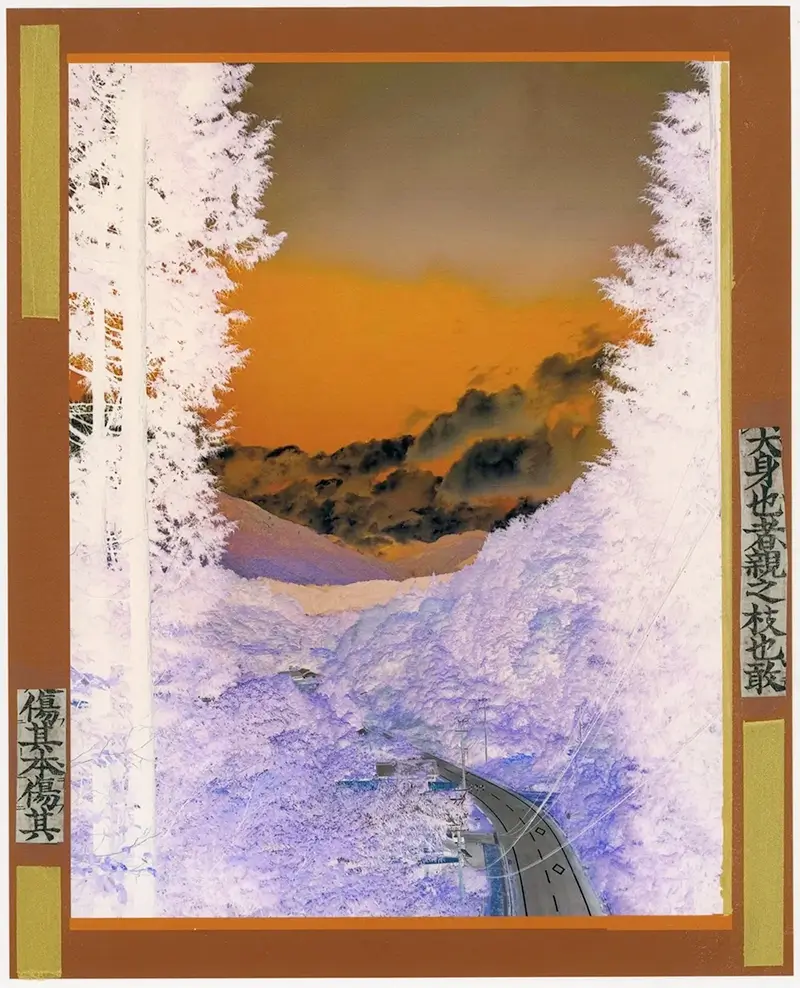
The Real Wound, from Japonisme: Fireworks and Cherry Blossoms © Aline Smithson
I remember walking through Monet’s house at Giverny and being captivated by the vibrant yellow walls lined with Japanese woodblock prints. It was a quiet revelation—my first true awareness of how profoundly Japanese art influenced the French Impressionists.
Japonisme: Fireworks and Cherry Blossoms continues this centuries-long artistic dialogue between East and West, past and present, printmaking and photography. Drawing inspiration from Hiroshige’s Ukiyo-e, I use photography as a bridge—layering each image with hand-painted gilding, colored surrounds, and fragments of text cut from ancient Japanese poetry books. Each photograph is interpreted uniquely, all are created in or inspired by Japan. These choices are not merely decorative; they are gestures of reverence, transformation, and connection.
As a woman working across disciplines, I’m particularly drawn to the quiet labor of embellishment—the kind of slow, meditative handwork often overlooked, yet filled with intention and power. My process honors the precision of traditional woodblock printing while adding a contemporary, female presence.
This series is both about homage and reinvention. By layering mediums, histories, and hands—my own included—I seek to create work that feels timeless and intimate. Japonisme: Fireworks and Cherry Blossoms is not just a tribute to what came before, but an invitation to continue the conversation—through new forms, new stories, and new ways of seeing.
www.alinesmithson.com
Ian van Coller
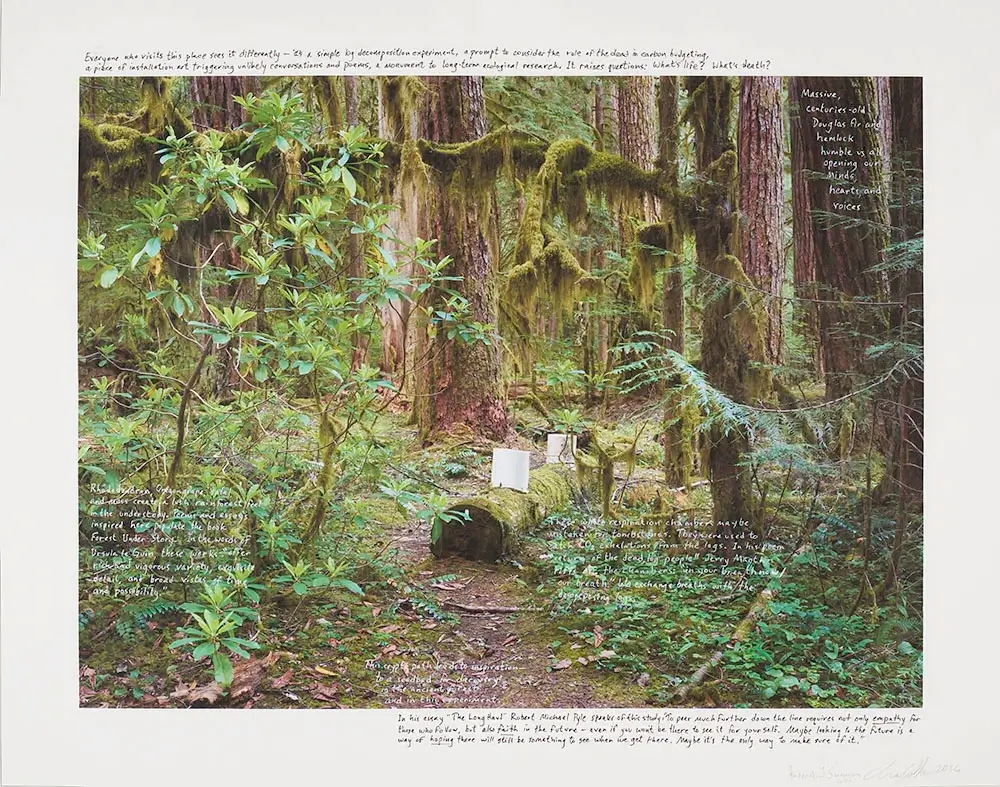
Decomposition Site #1 Fred Swanson Collaboration 1 © Ian van Coller
Installed in 1985, the Long-term Log Decomposition Site is an area of old-growth forest that is part of the HJ Andrews Experimental Forest in Oregon. Tree trunks of various species have been placed in patches of forest and then researched over a span of 200 years as they decompose. This site has and will provide information that elucidates how old growth forests act as nutrient and carbon sinks, which are essential to validate preservation efforts as the climate crises progresses at an exponential rate.
As part of my larger Naturalists of the Long Now project, these prints are direct collaborations with scientists and writers who conduct research at the experimental forest. Over a period of three years, (2021-2024) I photographed portions of the forest both before and after a significant portion of the forest burned. I asked my collaborators to reflect on the landscapes and then annotate directly onto the inkjet prints. Each annotated two prints, one of a photograph taken before the burn and the other after the burn.
This project breaks down barriers between art and science, and creates a dialogue between text and image, landscape and viewer, expert, and novice, past, present, and future. Through the exploration of earthly archives such as old growth forests, my intention is to encourage people to think in terms of longer spans of time and consider what humanity and nature will look like in 100 or even 10,000 years.
www.ianvancoller.com
Anastasia Sierra

Safe Place from the series 'The Witching Hour' © Anastasia Sierra
I become a mother and stop sleeping through the night. Years go by, the child sleeps soundly in his bed but I still wake at every noise. My father comes to live with us and all of a sudden I am a mother to everyone. As I drift off to sleep I can no longer tell my dreams from reality. In one nightmare my father tells me he’s only got two weeks left to live, in another I am late to pick up my son from school and never see him again. I am afraid of monsters, but instead of running, I move towards them: we circle each other until I realize that they are just as afraid of me as I am of them.
My images follow the logic of my dreams, where we are trapped in a strange colorful world, playing a never ending game of hide and seek in a labyrinth of love, care and fears, pushing against its walls, with no way to escape but wake up.
This work explores the emotional landscape of caregiving: tenderness, beauty guilt, and a constant sense of what could be lost.
www.anastasiasierra.com
Discover The Project
Matthew Finley
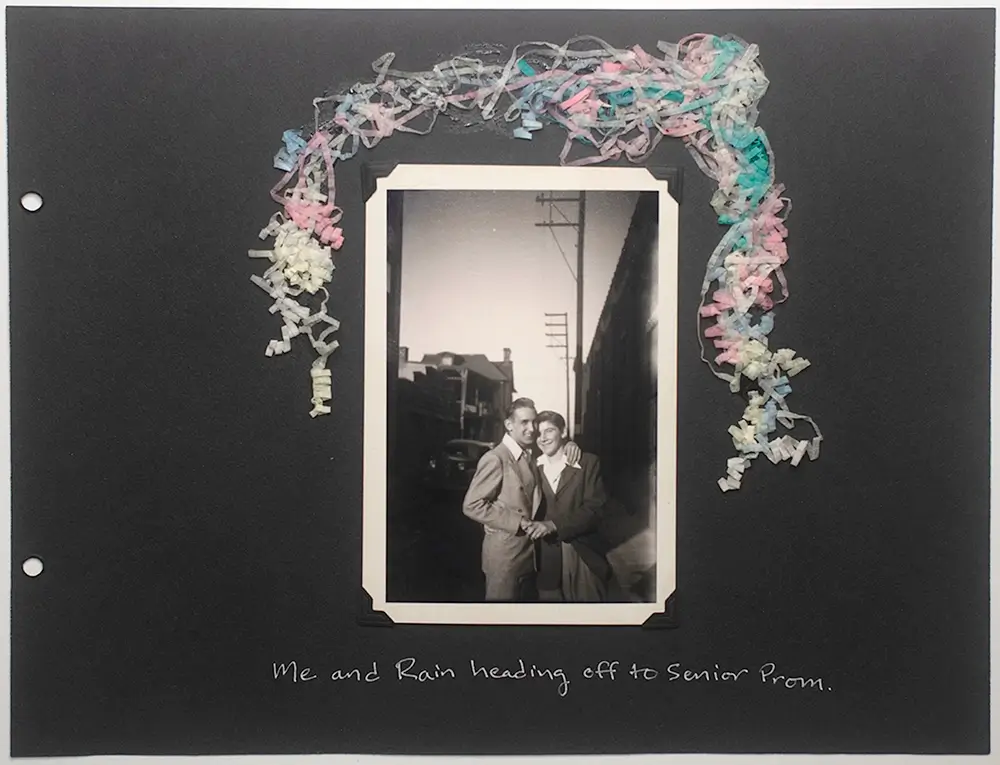
Senior Prom (album page) from the series 'An Impossibly Normal Life' © Matthew Finley
Imagine a world where it doesn’t matter who you love, just that you love.
An Impossibly Normal Life is an artifact from another world, a more loving, inclusive one where who you love is of little societal importance. This fictional story, centered on my imagined uncle’s idealized life, is created from collected vintage snapshots from around the world.
Two years ago, my mother offhandedly mentioned that I had an uncle who may have been gay, but he died not long after I was born. Hearing this revelation for the first time, nearly thirty years after I had struggled to come out to my disapproving family, sent my mind spinning. The thought of a family member so close to me going through some of the same things I did inspired me to create this story.
Instead of returning to the hiding or shame of most pre-1970’s queer stories, a reality of how our world was (and in some cases, still is), I have created an alternate history where fluidity in gender and sexuality is the societal norm. Collecting original, found snapshot photographs from all over the world, I have assembled a collection of images that capture our hero, Uncle Ken, with a sassy hip out in his teens or a loving kiss at his wedding. Normal, everyday moments of him, his friends, and lovers, chosen with care. I have collected ephemera and created letters between him and loved ones as a way to share and fill-out more of his story. Engaging with the photos further, I am adding color and energy through glitter and rhinestones, a nod to the long history of queer nightlife and drag, to enhance the images with the spirit of joy and celebration. A celebration of not only what his world could have been, but what ours still can be.
www.mfinleyphoto.com
Discover The Project
Aiko Wakao Austin

Senior Prom (album page) from the series 'What we inherit' © Aiko Wakao Austin
“What we inherit” is an artistic exploration of legacy, culture and tradition through my Japanese heritage. Using kimonos and scrapbooks that my grandparents left behind from the 1930-60s, the photographic montages represent a family’s memories and emotions that have been passed down, but are also slowly fading.
My grandmother, a lover of luxury despite the family’s financial struggles in postwar Japan, continued to commission exquisite kimonos. Many were crafted from fine silk and adorned with intricate embroidery that are specific to that time. It was perhaps her means of self-expression or how she defined her place in society. Forty years after her passing, what is left of her inheritance has traveled with me to America.
My grandfather, a television producer in Japan’s early broadcast era, was a devoted documentarian of his own life. His meticulously compiled scrapbooks, with photographs of himself and his family, reveal glimpses of a rapidly modernizing society. Though he passed away years before I was born, his visual records have passed on pieces of his life to me.
My image-making process involves photographing the kimonos during mushiboshi, a tradition of airing the fabric during the dry months. The garments are photographed in natural light and merged with scanned archival photographs. In layering photographs and textiles, I aim to visualize the layers of time and meaning we carry within us.
Storytelling, particularly across generations, is an act of care. It allows us to tether ourselves to something larger than our individual lives. It helps us make sense of who we are and where we come from. By bridging the past and present, this project seeks to preserve one’s tangible history, and reimagine its place in today's digital culture.
www.aikoaustin.com
